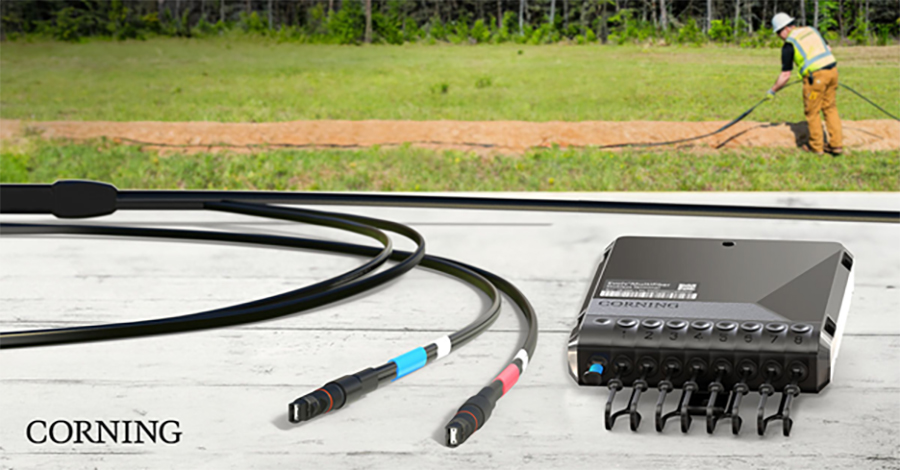
Deploying fiber in rural areas presents unique challenges—long distances, limited skilled labor, and logistical complexity.
Challenges in Rural Broadband Deployment
Access to broadband Internet is crucial in rural and remote areas because it serves as a gateway to essential services and opportunities that are increasingly reliant on digital connectivity. Broadband access boosts education, letting students in remote areas join online classes and use digital libraries and interactive tools. Telemedicine thrives with reliable Internet, allowing remote patients to consult doctors and get diagnoses and treatment plans without traveling to cities.
Beyond essential services, broadband also acts as an economic driver, empowering small businesses and entrepreneurs in rural areas to reach broader markets, utilize e-commerce platforms and foster innovation. Ensuring broadband deployment not only bridges the digital divide but also lays the foundation for social and economic growth in regions that have long been underserved.
As of 2022, 93.1% of households in Canada had access to a broadband service with at least a 50Mbps download speed, 10Mbps upload speed, and unlimited data. This metric fell to just 57.5% in the North and 50.1% in First Nations reserve areas, highlighting Canada’s digital divide.
Challenging terrain, such as mountains, dense forests, and expansive lakes, poses significant obstacles for broadband deployment in rural regions. These natural barriers often make it difficult for installation crews to access remote locations. With some areas only reachable by air or barge, the logistical costs of each deployment site increase even further. Additionally, extreme weather conditions, such as heavy snowfall in winter or flooding in the spring, can delay construction activities and complicate maintenance efforts.
Moreover, the construction season in Canada is notoriously short. In southern and western areas, the window for outdoor broadband infrastructure projects typically begins in May and closes by October. This timeframe is even more restricted in northern regions, where harsh winters and frozen ground severely limit construction opportunities. As a result, providers must carefully plan and execute operations within these narrow timeframes to avoid costly delays.
Another critical challenge is the lack of skilled technicians and engineers, particularly those trained in modern broadband technologies. In rural areas, workforce shortages are often further exacerbated by remote locations. Tackling these multifaceted challenges requires an innovative approach, adaptive technology, and collaborative partnerships to ensure successful broadband implementation across all of Canada’s diverse landscapes.
Innovative OSP Solutions
Service providers are increasingly turning to innovative Outside Plant (OSP) solutions that address the challenges of broadband deployment in rural and remote areas. These solutions emphasize simplicity in deployment, transport, and installation to overcome barriers such as inaccessible terrains, workforce shortages, and restricted construction windows.
By focusing on pre-engineered, plug-and-play systems, these solutions not only reduce the time and complexity of network builds but also enhance cost efficiency and sustainability. Such approaches are designed to adapt seamlessly to diverse environmental conditions while ensuring reliable and high-quality connectivity for underserved communities.
Corning’s Evolv® Solution with Pushlok® Technology and the FlexNAP™ System directly address these issues with a pre-engineered, plug-and-play approach.

- Rapid Deployment:
- The FlexNAP™ System deploys 5x faster than traditional methods by eliminating field splicing, significantly reducing installation time and labor costs.
- With Pushlok® Technology, installation is as simple as Push. Click. Connected.—enabling less experienced crews to perform installations efficiently.
- Environmental Benefits:
- Reduces packaging waste by up to 30%
- Increases shipping efficiency by up to 45% more units per pallet
- Simplifies inventory with SKUs for 2, 4, 6, 8, and 12-port options
- Eliminates the need for long pre-terminated cable lengths
- Diverse Rural Terrains:
- Supports direct buried, duct, aerial lashed, and self-supporting architectures—ideal for diverse rural terrains.
- Smaller Form Factors:
- Smaller form factors reduce infrastructure costs (smaller conduits, handholes, pedestals) and support 12-fiber connections in the same size as single-fiber units.
- Cost Efficiency:
- Reduces total cost of ownership
- Supports sustainability goals through reduced materials and waste
- Enables faster ROI through accelerated deployment
- Interchangeable Components:
- Components are interchangeable and replaceable, minimizing downtime and simplifying maintenance.
Choosing the Right Partners
Due to the complexity of deploying broadband in rural or challenging areas, many service providers turn to specialized supply chain solutions partners for their expertise in planning and procurement, project management, logistical support, warehousing, and full turnkey services to support all aspects of their deployments. Wesco’s team of experts has decades of experience with broadband projects to support and simplify the network deployment journey and connect Canada.
Corning offers a Broadband Network Solution Tool to help partners and customers select the optimal architecture for their rural deployment needs. Selecting the right architecture is crucial for efficient deployment and quality over time and Corning’s Broadband Network Solution Tool makes it easy.

Collaborative Solutions for Connectivity
Together, Corning and Wesco deliver connectivity to every edge of the network, providing innovative solutions that help service providers overcome challenges in rural broadband deployment. By leveraging Corning’s Evolv® Stubless Terminals with Multifiber Pushlok™ Technology, providers can reduce the complexity of their projects, streamline logistics, and significantly minimize installation costs. These pre-engineered systems not only improve the speed and efficiency of network builds but also ensure durable, high-quality connections in diverse and often challenging environments.
HIGH QUALITY JOURNALISM REQUIRES AN INVESTMENT.
Cartt.ca publishes breaking news, in-depth feature stories, analysis, and opinion geared specifically for those working in the cable, radio, television, and telecom industries in Canada.
Breaking news, top-notch analysis and commentary is posted as it happens while twice-weekly newsletters compile those stories and deliver them directly to more than 4,000 industry subscribers. Cartt.ca offers credible journalism for the industry professional.




